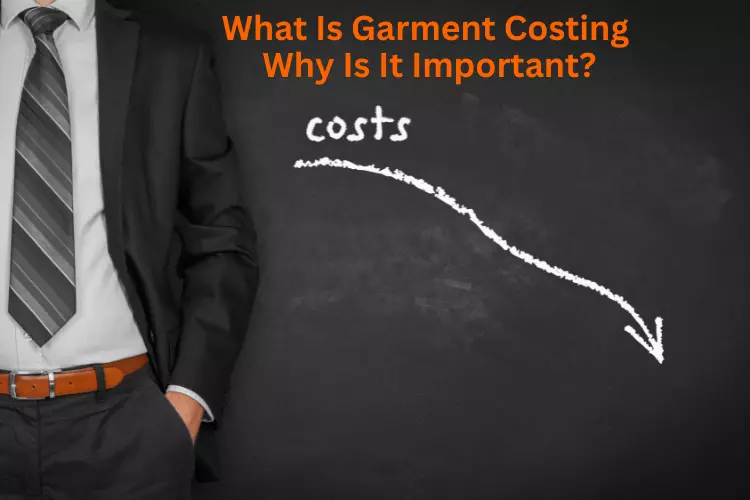Garment costing is an integral aspect of the fashion and apparel industry, playing a crucial role in the overall business strategy. It refers to the process of estimating the expenses involved in the production of a clothing item, from the initial design stage to its final retail price. Accurate garment costing is essential for fashion businesses to make informed decisions about pricing, sourcing, production, and profitability. In this article, we will delve into the intricacies of garment costing, its importance, and the various factors that influence the cost of producing garments.
The Basics of Garment Costing
Garment costing involves a comprehensive analysis of all expenses incurred throughout the garment’s lifecycle. This includes:
Materials Cost
The cost of fabrics, trims, and any other materials required for the garment’s production. This can vary significantly depending on the quality and quantity of materials used.
Labor Cost
The expenses related to labor, including salaries, wages, and benefits for all individuals involved in the manufacturing process, such as pattern makers, cutters, sewers, and quality control personnel.
Overhead Costs
Overhead costs encompass various indirect expenses, such as rent for manufacturing facilities, utilities, maintenance, and administrative expenses. These costs are distributed across the production of all garments.
Transportation and Shipping
Costs associated with transporting materials to the manufacturing facility and finished products to distribution centers or retailers.
Taxes and Duties
Import/export duties and taxes can significantly impact the cost of garments, especially if materials are sourced internationally.
Packaging and Labeling
Expenses for packaging materials, branding labels, and any additional marketing materials included with the garment.
Quality Control
Costs related to quality control procedures to ensure that the final product meets the required standards.
Sourcing and Supply Chain
The efficiency and costs associated with sourcing raw materials and managing the supply chain can greatly affect garment costing.
Why Is Garment Costing Important?
Pricing Strategy
Accurate costing is essential for determining the appropriate retail price of a garment. Setting the right price point ensures that the product remains competitive in the market while generating sufficient profit margins.
Profitability Analysis
Garment costing helps fashion businesses assess the potential profitability of a product. By understanding the costs involved, companies can make informed decisions about which products to produce and which to discontinue.
Cost Reduction
Identifying areas where costs can be reduced without compromising quality is crucial for maintaining competitiveness in the fashion industry. Effective costing allows for cost-saving opportunities to be recognized and implemented.
Sourcing Decisions
Garment costing plays a pivotal role in choosing the right suppliers and materials. It helps businesses evaluate whether sourcing materials internationally or domestically is more cost-effective.
Production Planning
Understanding the cost breakdown enables efficient production planning and resource allocation. It helps in determining production quantities and lead times.
Inventory Management
Accurate costing aids in managing inventory levels effectively. Overestimating costs can lead to overstocking, while underestimating can result in stockouts.
Budgeting and Financial Management
Fashion businesses rely on garment costing to create budgets and financial forecasts. It provides a solid foundation for financial planning and decision-making.
Sustainability
As sustainability becomes a significant concern in the fashion industry, garment costing is also being used to assess the environmental impact of production processes and materials, encouraging more sustainable practices.
Factors Influencing Garment Costing
Several factors can influence garment costing, making it a dynamic and complex process:
Design Complexity
The complexity of the garment’s design, including details, embellishments, and construction, affects the cost of materials and labor.
Material Selection
The choice of fabrics, trims, and other materials can significantly impact the overall cost. High-quality or specialty materials often come at a premium.
Location
The geographical location of manufacturing facilities and suppliers can influence labor costs, transportation costs, and import/export fees.
Order Quantity
Economies of scale play a role in costing. Larger production quantities can often lead to lower per-unit costs.
Production Techniques
The choice of production techniques, such as manual labor versus automation, affects labor costs.
Lead Times
Rush orders and short lead times can increase costs due to expedited shipping and overtime wages.
Regulatory Compliance
Garment manufacturers must adhere to various regulations, including labor and safety standards, which can impact costs.
Conclusion
In the fashion industry, accurate garment costing is more than just a financial exercise; it is a strategic imperative. Fashion businesses must balance the need for competitive pricing with the necessity of maintaining profitability. By understanding the intricacies of garment costing and considering the multitude of factors that influence it, fashion companies can make informed decisions that drive success in a highly competitive market. Moreover, as the industry moves toward sustainability, garment costing is evolving to incorporate environmental and ethical considerations, ensuring that fashion businesses not only remain profitable but also responsible stewards of the planet and its resources.
References:
- Kaplan, S. (2009). “Fashion Costing.” Laurence King Publishing.
- Christopher, M. (2016). “Logistics & Supply Chain Management.” Pearson UK.
- Charnsilpa, W., et al. (2013). “Factors Affecting the Cost of Garment Manufacturing: A Case Study of a Ready-to-Wear Woven Cotton Shirt.” International Journal of Trade, Economics, and Finance, 4(4), 259-262.
- Choi, T. M., et al. (2019). “Garment Costing with Sustainability Concerns under Demand Uncertainty.” Sustainability, 11(3), 891.


